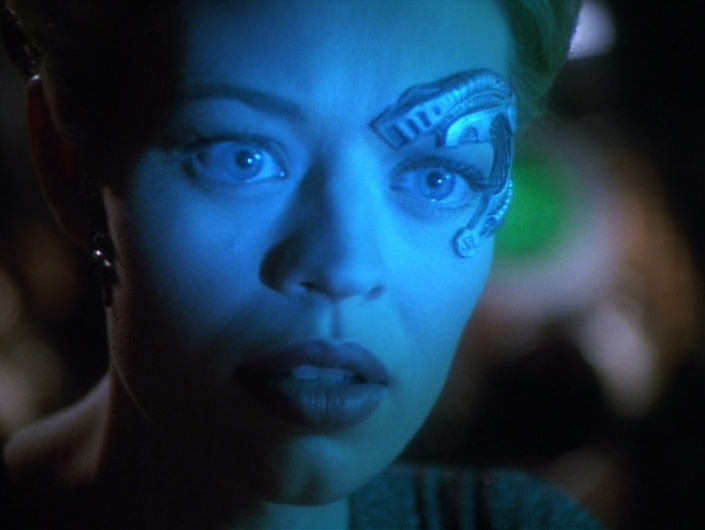
“If you had the chance to see your God, (…) what would you do?” (VOY s04e21 “The Omega Directive)
This might sound like a strange question from a character as logical as Seven of Nine, in a franchise as dedicated to scientific humanism as Star Trek. Series creator Gene Roddenberry, raised in a Southern Baptist household, became an atheist as he grew older: “I made up my mind that church, and probably largely the Bible, was not for me (…) If people need religion, ignore them and maybe they will ignore you,” he told The Humanist magazine in a 1991 interview.
This worldview continues to influence his successors to this day. Brannon Braga, co-creator of Star Trek: Voyager, said he and his colleagues gave “no consideration” to “humans talking about God” in their scripts, although they “did very often explore theology through alien characters” (Ex Astris Scientia). On that note, Voyager includes several episodes that encourage critical thinking and call out the use of religious dogma to control others, such as s01e01 “Caretaker,” in which the Ocampa species’ protector-god turns out to be responsible for their misfortune. This is in line with Roddenberry’s philosophy: “I condemn false prophets,” he told his interviewers, “I condemn the effort to take away the power of rational decision.”
On the other hand, for a series that advocates boldly going into the unknown, rationality will only take you so far. In Voyager’s “The Omega Directive,” science and faith meet, not to cancel each other out, but to complement each other, as two women search for knowledge in ways more similar than they admit.
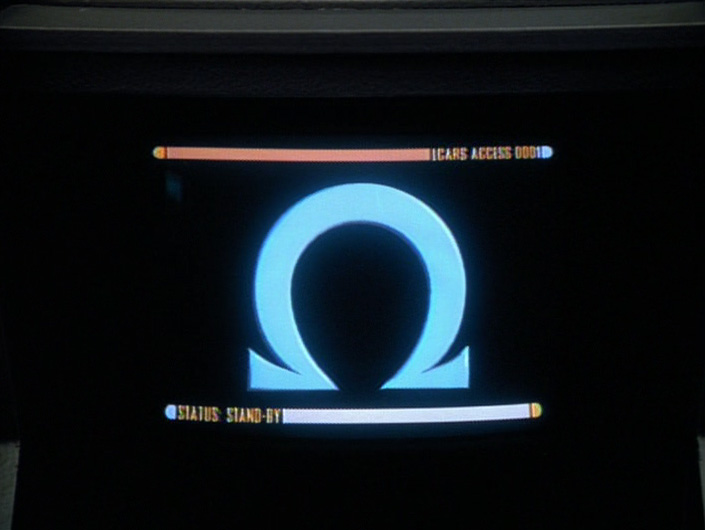
The story starts when Captain Janeway receives an automated alert message from her computer, saying Voyager’s sensors have detected a substance named Omega, after the last letter in the Greek alphabet. Ancient Greek is the language of some of the earliest scientific texts in the Western world, and also parts of the New Testament: “‘I am the Alpha and the Omega, the beginning and the ending,’ says the Lord” (Revelation 1:8). Fittingly, one Omega molecule is powerful enough to either sustain or end a civilization. When it explodes, it kills every living thing and makes warp travel impossible for lightyears around it. Starfleet captains have a standing order—the titular Omega Directive—to destroy it whenever they find it.
However, when Janeway enlists her ex-Borg crew member Seven of Nine for help destabilizing the molecules, Seven is reluctant to follow her order: “Omega is infinitely complex, yet harmonious,” she explains. “To the Borg, it represents perfection. I wish to understand that perfection. Without it, my life will never be complete.”
It would be too simplistic to say that Janeway represents science and Seven represents faith in this debate, as they each have aspects of both. Seven is looking to Omega for enlightenment, but she also believes it should be used as an energy source, and derides Starfleet’s caution as “ignorance and fear.” Janeway, for her part, sees Omega only as a particle, and does not believe learning more about it is worth the risk to her crew and the planets nearby. When asked why, as a woman of science, she isn’t more curious, she retorts: “I’m also a woman who occasionally knows when to quit.”
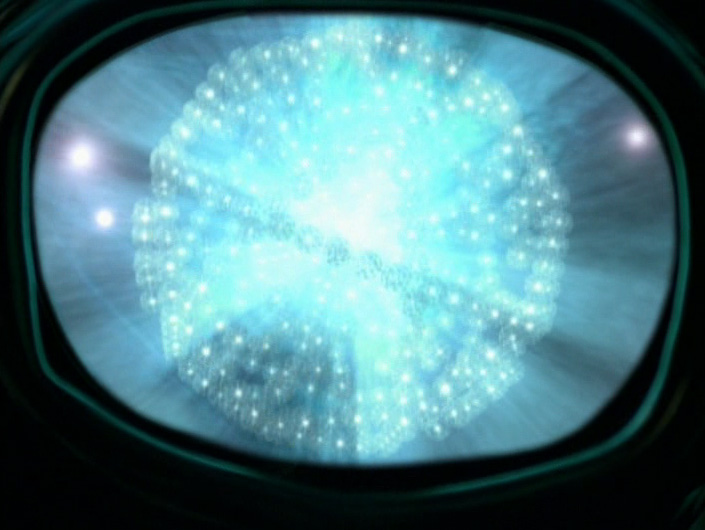
As deeply held as Janeway’s and Seven’s convictions are, however, they are still willing to listen to each other. Seven agrees with the Captain that the safety of the crew must come first, but just before they destroy the Omega molecules, she briefly sees them stabilizing on their own, almost as if they accept their fate and want to give her the moment she’s longed for. She cannot explain this and it leaves her deeply moved. “As I was watching it, it seemed to be watching me,” she confides in her mentor. Janeway disagrees, but does so respectfully: “If I didn’t know better, I’d say you just had your first spiritual experience.”
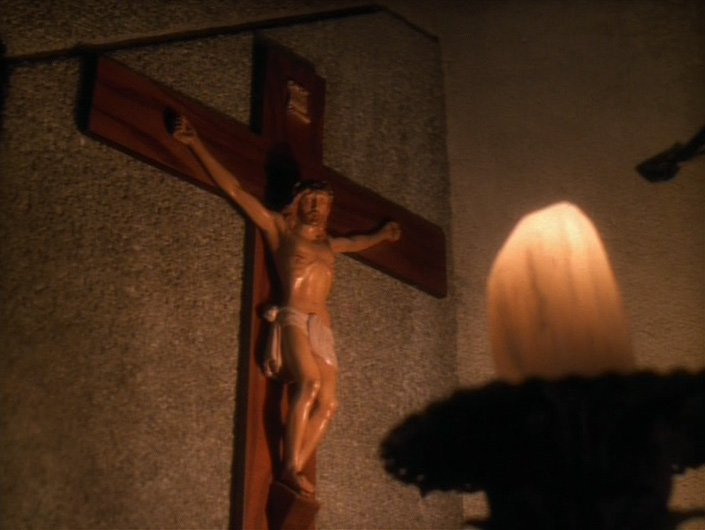
This conversation, the last scene in the episode, takes place inside a holographic recreation of the workshop of Leonardo da Vinci, who himself was both a scientist and a somewhat conflicted Catholic (Wikipedia). Of all the significant or interesting items in the room—paintings, sculptures, blueprints, machine designs—Seven and Janeway are looking up at a small wooden crucifix high in a corner. As an outcast with stigmata on her hand and forehead, and a leader willing to give her life for her people, what do they think of when they see that cross? Does it only remind them of religious oppression, or does it move them like Omega does? Which one is the truer representation of transcendence—or could it be both?
The final shot shows Janeway and Seven, sitting by the fire in a shared, thoughtful silence. There is, in fact, a lot to think about; this episode doesn’t give us easy answers. As such, it couldn’t be further from the “false prophets” Roddenberry condemned. There is a difference between using dogma to suppress the truth and using faith to search for it.
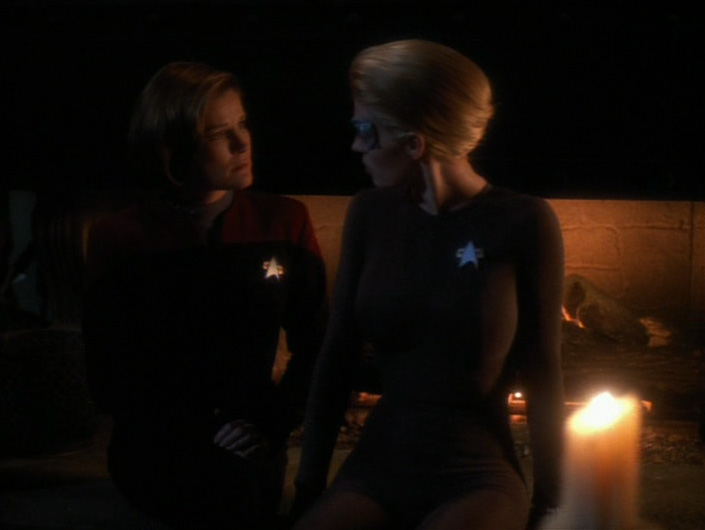
For me, “The Omega Directive” has been a favorite for more than a decade. I’ve watched it as an agnostic and as a Christian. It speaks to me every time, not least because it doesn’t condemn either perspective. With all due respect to Roddenberry, I don’t entirely agree with his statement that people with different beliefs should ignore each other. That may be the safer way when dealing with fundamentalists, but for the rest of us, we can still learn from each other … and when we disagree, we could do worse than end an argument with firelight and silence.
“With all due respect to Roddenberry, I don’t entirely agree with his statement that people with different beliefs should ignore each other. That may be the safer way when dealing with fundamentalists, but for the rest of us, we can still learn from each other … and when we disagree, we could do worse than end an argument with firelight and silence”
This ^^^ a million times this. You nailed it, thank you!